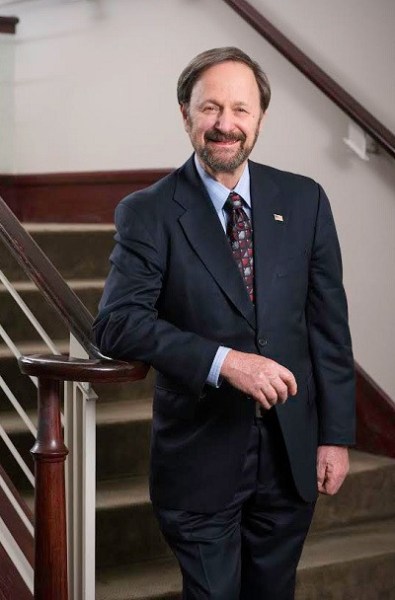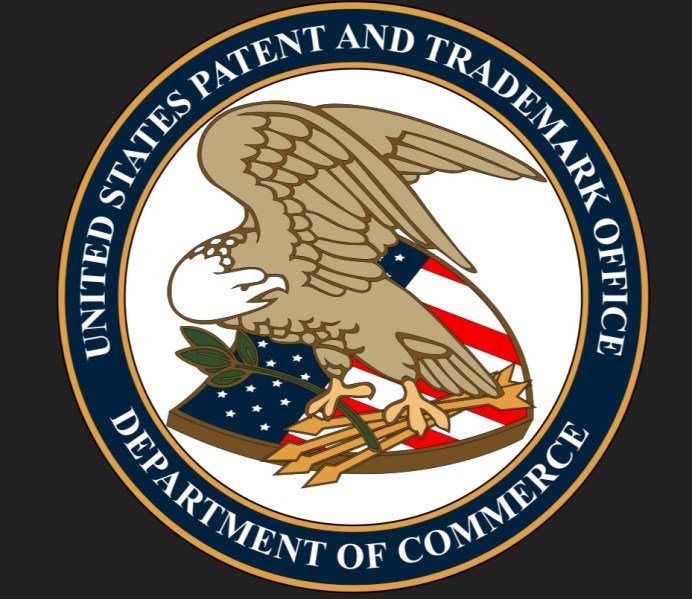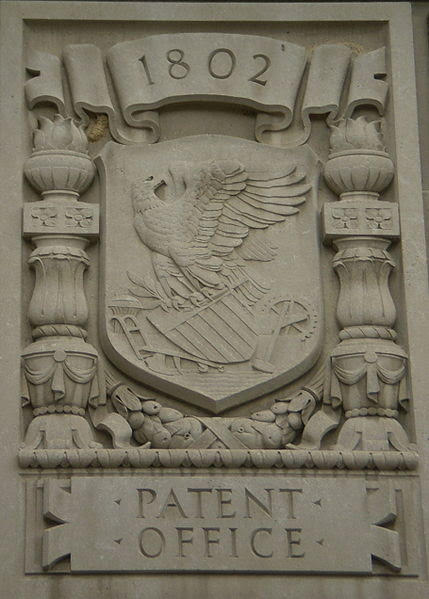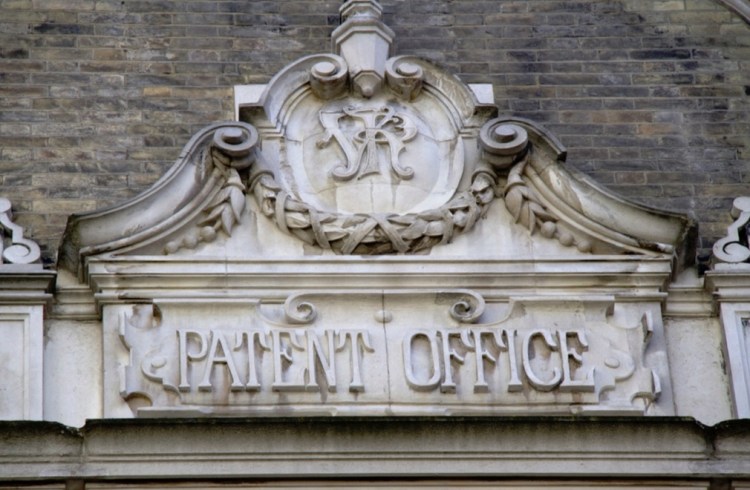Gil Hyatt’s patience has been tested. After a 22-year delay, the inventor received a patent in 1990 for what he called the first microprocessor, or a computer on a chip. After cutting a deal with Philips Electronics, he began collecting royalties on a lot of electronics products that used the fundamental technology.
In Silicon Valley and elsewhere, Hyatt was viewed as a carpetbagger, a man who created a “submarine patent” by continually following up his patent application with new details. He claims he was a diligent individual inventor who protected his rights. But after the controversial patent award, and after getting 75 patents, the patent office never approved one of his applications again.
More than 40 years later, Hyatt said his important applications are still in limbo. (The typical wait time is 18 months.) He has made at least $150 million from the Philips deal, but he said he is fighting for “justice.” The case took a twist in 2014, when news emerged that the U.S. Patent and Trademark Office had a special way of flagging potentially controversial patents.
The flagged applications went all the way to the leadership of the patent office, and they were often never granted by the office. The patent office called this the Sensitive Applications Warning System (or SAWS), and it operated in secret for decades, based on the results of 31 Freedom of Information Act requests and court discovery unearthed by Hyatt and his nonprofit American Center of Equitable Treatment. Hyatt — and even a former patent commissioner — called the SAWS flag a “scarlet letter.” Hyatt sued the patent office.
June 5th: The AI Audit in NYC
Join us next week in NYC to engage with top executive leaders, delving into strategies for auditing AI models to ensure fairness, optimal performance, and ethical compliance across diverse organizations. Secure your attendance for this exclusive invite-only event.
I interviewed Hyatt multiple times in the 1990s, and again four years ago. But now he’s 80 years old, and he has a new crusade against the patent office over SAWS. He believes the patent office is waiting for him to die, rather than granting him any more patents. Hyatt said that what he discovered in his legal fight is pretty alarming for all individual inventors. At least one other inventor, Corliss Burandt, found out that his application carried the SAWS flag, and Burandt is still fighting for issuance. I talked to Hyatt about this controversy again last week. The patent office declined to comment on Hyatt’s ongoing litigation.
Here’s an edited transcript.

Above: Gil Hyatt in 2014 at age 76. He is now 80 years old, and still seeking his patents.
VentureBeat: Could you walk me back and review some of the timeline of when big things happened with you? It was around 1990-ish or so, wasn’t it, that we first talked about the microprocessor patent? I was at the Los Angeles Times.
Gil Hyatt: Yes. It was 1990. Another one of my patents was widely licensed, and then — I had a lot of patent applications pending. There was a change in the law in 1995, with the GATT treaty. They grandfathered us old guys in, so I filed more patent applications dating back to the earlier inventions. They’re still pending right now.
VentureBeat: How long would you say some of your longest-running applications have been pending, then?
Hyatt: I just filed an appeal brief on a patent application that the patent office has delayed for about 40 years. That was filed back in 1977. About a year ago I filed an appeal brief on another patent application of mine that I filed in 1972, about 45 years ago. The patent office has delayed and delayed. I’m finally hoping to get to the board of appeals and to the courts to stop the delays and get my patents issued.
VentureBeat: How many would you say are granted now?
Hyatt: I have more than 70 patents granted. At some point in time the patent office unlawfully decided, no more patents for Hyatt. They were down on independent inventors, and I was a prominent independent inventor. For the past 25 years I’ve been trying to overcome that illegal rule that they had, and in fact I have a major case now filed in federal court, a mandamus case to order them to properly examine my patent applications.
VentureBeat: How many do you think are pending still, these applications?
Hyatt: Originally I had almost 400 of them, because I had a lot of great technology that I needed to cover. But they’ve been unlawfully abandoning my applications recently. That’s an issue in the mandamus, the bad faith case we have filed against the patent office.
VentureBeat: I remember the Philips license was worth a lot of money for you. Did that wind up being the biggest you had?
Hyatt: Philips had exclusive authority to license my patents. They licensed them worldwide. The microcomputer patent was one of a portfolio of 23 patents they were licensing.
VentureBeat: Was that successful for you, the licensing that Philips handled?
Hyatt: Yes, it was very successful. The business community embraced my patent portfolios. A lot of major companies like Sony and Sharp and Toshiba licensed my patents. It was a very successful program. Philips did a great job.
VentureBeat: Has that ended now?
Hyatt: No, those patents have since expired. I’m hoping to get my more recent patent applications issued, if the patent office will ever stop delaying and give me a fair examination.

Above: Inventing
VentureBeat: Did you find some evidence that they have deliberately delayed your patents?
Hyatt: Yes, I have an enormous amount of evidence. I had an appeal to the federal court, the judge allowed us to take discovery, and we got thousands of pages of very incriminating evidence from the patent office and the depositions we were permitted to take. We have a very significant bad faith case against them. We’ve articulated many of these things briefly in the complaint we filed about three months ago. It’s now pending in the federal court of the eastern district of Virginia.
VentureBeat: The time period it covers — is that all the way up to the present day, or is it a specific time in the past where you found something that showed a deliberate delay happening?
Hyatt: This has been ongoing since 1995, when the new applications were filed, up through the present. It turns out that the patent office has been adversarial to independent inventors for a very long time.
VentureBeat: What do you think motivated this change? For a while they were granting you patents, and then this change in attitude happened. Did somebody specifically complain about you, causing this to happen? I don’t know if Intel complained to the patent office or what-have-you, but did somebody trigger this breakdown in your patent applications?
Hyatt: The patent office — the commissioner of patents at the time was very outspoken about what he called “submarine patents.” They unfairly blamed me for being a “submariner,” without checking into the facts. They needed someone to hold up as a perpetrator. Then, once they poisoned the well against me, the withholding of patents from me continued from administration to administration. We’re in the process of trying to break that chain and get the courts to order a fair examination of my applications.
VentureBeat: How old are you now, by the way?
Hyatt: I’m 80 years old. God’s been kind to me.
VentureBeat: Are you still in Las Vegas?
Hyatt: Yes, I’m in Las Vegas. I’ve lived here for the past 25 years or so. I moved here in 1991. One of the biggest problems the patent office created is they created this secret program called SAWS, Sensitive Application Warning System. It’s supposed to be a warning system for the directors of the PTO so they could deal with press. But instead, they used it to keep patent applications from issuing. If the truth be known, there were thousands of patent applications that should have issued and have been kept from issuing because of this secret program.
Even more significant, the board of appeals is supposed to be an independent and impartial entity, but the board was given secret information about patent applications. Applicants didn’t know about this. They weren’t permitted to argue against it. It’s a star chamber type of proceeding.

Above: The seal of the U.S. Patent and Trademark Office.
VentureBeat: Did you find something that referenced them saying they’d just wait until you died?
Hyatt: We have testimony on that from several sources, yes. We articulate that in the complaint as well.
VentureBeat: Have you had any favorable developments with regard to this — any progress?
Hyatt: Yes, very favorable. Judge [Royce] Lamberth, in federal court, gave me four decisions in four different trials that were very favorable, ordering the patent office to issue my patents, and taking away one of their biggest issues.
VentureBeat: Have they responded to that yet?
Hyatt: That decision just came down in the last month. We don’t know how it will play out yet.
VentureBeat: What do you think is the most significant patent you’re waiting on?
Hyatt: I’d prefer not to talk about that at this time.
VentureBeat: What have you continued to work on since the time of the microprocessor patent?
Hyatt: I did the work on the microprocessor back with a company I formed called Micro Computer Inc., back in 1969 and 1970. From there I continued with my research and development for more than 20 years and filed a bunch of patent applications, many of which are still pending with the patent office through their delays. It’s a whole sequence of research and development, one technology building on another.

Above: Patent Office sculpted panel.
VentureBeat: Have any of these gone into practice or production, anything built in large volumes based on the applications?
Hyatt: Yes. For example, Sony alone, one of my licensees, built millions of products, not only under license, but also marked with my patent numbers. The patent statute gives special benefits if you notify the public as to the patents the products are marked under. Therefore, the manufacturers like Sony put permanent labels on their products that notify the public that these products are produced under license from these patent numbers, which are my patent numbers. There were untold millions of products from Sony and Sharp and Toshiba and many other licensees that marked their products with my patent numbers.
VentureBeat: That tells everyone how valuable the work was, then?
Hyatt: Yes.
VentureBeat: Were the patent applications in some way able to be exploited by anybody who was a licensee, based on the pending nature of the applications?
Hyatt: Not really. The patent applications are kept in confidence by the patent office, because the statute requires it. Therefore, not only did I not get the patents to exploit them commercially, but the public was kept from seeing these new technologies. I testified in court in Judge Lamberth’s trials, within the past year, to that effect. One of the technologies that is not use today, because it wasn’t patented and disclosed, has thousands of times improvement in display systems. The public did not have access to it because the patent office wouldn’t issue a patent. But that’s one of the technologies in the patents that Judge Lamberth has ordered the patent office to now issue.
VentureBeat: Where is the case happening?
Hyatt: There are several. There were four trials, if you will, that Judge Lamberth had, and those were in the Washington, D.C. district court. The PTO bad faith case is being litigated in the eastern district of Virginia, in federal court.
VentureBeat: I remember you had a long-time patent attorney. Are you still working with the same man?
Hyatt: Yes, his name is Gregory Roth. He filed the original patent application on the microcomputer for me back in 1970, almost 50 years ago now. He’s still working on my patent applications. There’s a lot of great technology I researched, and that’s still pending before the patent office.
VentureBeat: Are you still in good health? You’ve been beating the patent office in at least one way, it seems.
Hyatt: [laughs] The truth of the matter is, they’ll outlast me. But the other side of the coin is, will they have to issue my patents while I’m still around? I’m planning on creating a foundation to exploit them for human rights purposes. I’d like to be around while that’s in effect.
VentureBeat: Is that a common way of collecting patent royalties for an estate?
Hyatt: No, most patents are exploited by companies, and most companies, if I could make another joke, have a very long life. But the foundation is much better. A company is usually for profit, and has more stringent requirements than a philanthropic foundation. But then I’m not a lawyer.
VentureBeat: Would you say you’ve had a comfortable life based on what you could make from the Philips deal?
Hyatt: Comfortable financially, but very stressful because of the bad-faith activities of the patent office.

Above: Gil Hyatt set up a nonprofit to tangle with the patent office.
VentureBeat: How did you originally have the suspicion that led you to file this suit in the first place? How did you come across the possibility that they could be deliberately delaying your patents?
Hyatt: The real day of truth was when Judge Lamberth permitted us to take discovery from the patent office and we got a tremendous amount of incriminating documentation and testimony that admitted to really horrible things. Until that happened, I had suspicions that something was going on, but I didn’t know how structured and pervasive it was, or any details of it.
For example, the SAWS program had all of my patent applications flagged with SAWS flags, so that they couldn’t issue. They were withdrawing the few that did get through barrier from issuance before they were issued. They were suspending and otherwise holding and delaying my patent applications for years. Certainly I knew about that, but I didn’t know it was a management objective, a rule at the patent office, something they were required to do.
Relative to the SAWS flag, a former commissioner, the one who actually created the SAWS program, says that was a “scarlet letter.” Once a SAWS flag is put on a patent application, we know now that you can never take it off. That patent application is essentially dead.
VentureBeat: You must have been shocked to find this evidence.
Hyatt: Yes. Right now I’m in the process of putting the materials I’ve discovered on a website so that the public can see them. We’re trying to get the patent office to notify the other victims, others that were part of the SAWS program, so that they can be made whole again. Eventually many of the independent inventors who were targeted finally gave up. They just couldn’t afford to fight it. The question is, how do we find out who these victims were and how do we make them whole again?
VentureBeat: Were you able to discover any other applications that had these flags?
Hyatt: Yes. There’s one gentleman [Corliss Burandt] in particular, whose story is on the website. They’ve kept him tied up in the patent office for 30 years with a flag on his patent application to keep it from issuing. A very credible patent examiner allowed that application to be issued, but her supervisor pulled that approval and put the application back into this never-ending examination. Then they took all those records from the file history so there’s no longer any record about what they did to him.
We believe this violates the Federal Records Act. Although all of my patent applications were SAWS flagged, none of the file histories reflect that. It was secret, which is unlawful. The law requires that all patent proceedings be in the record.


